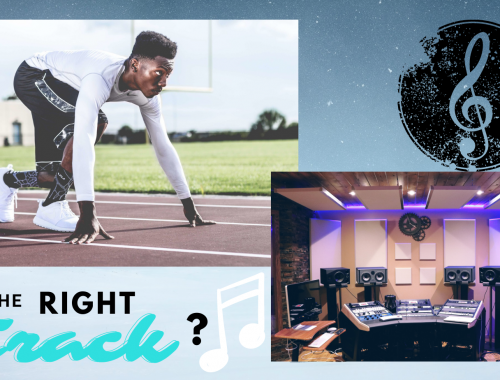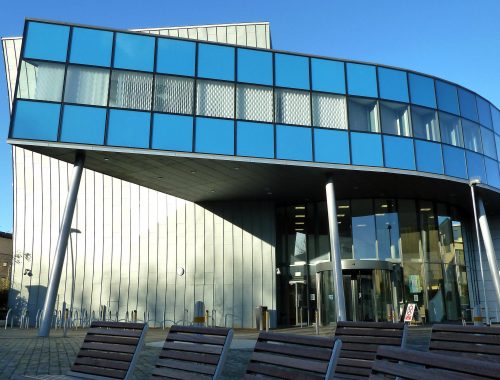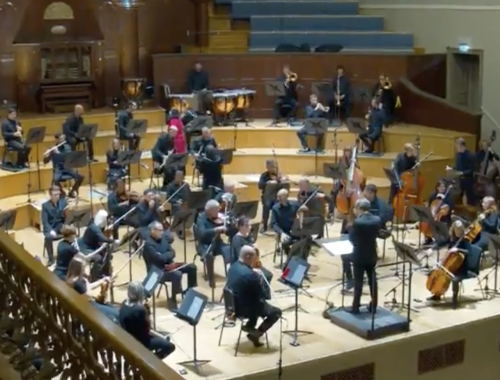Start of Something New
“Music therapy is an evidence and art-based health profession which uses musical experiences within a therapeutic relationship to address clients’ physical, emotional, cognitive, and social needs.”[1]
Music therapy is a process that can help people in so many ways from people dealing with post-war trauma to individuals with speech difficulties. This blog will reflect upon the experiences beginning my placement, this will be done through ‘Gibbs’ Reflective Cycle’.

When I selected the work-based learning module, I knew I wanted to do music therapy, as it was always something that interested me. Over the summer, I contacted Karen Diamond Music Therapy Services, who promptly responded and was keen to get me on board, after spending several months trying to align two very busy schedules, we finally got a date that suited! The morning of my first day of placement, I was hoping my nerves wouldn’t get the better of me. Unsure of whether my nerves were coming from the thought of meeting someone I’d never seen or met before and had only conversed via email or the thought of having to sing and try and manage an abundance of over-excited nursery school children.
Upon meeting Karen, my nerves had started to subside, and I could feel myself relaxing. Karen asked me how I came across music therapy and where my interest came from. I explained that my interest in this kind of therapy came from a young age when I attended speech and language therapy for a stutter that knocked my confidence growing up. I’ve also had a strong love and passion for music from a young age which is why I was interested in a career that would combine the two. She nodded in an understanding way, explaining that music therapy can help in so many ways, and starting it from a young age can help prevent so many issues. I was excited to get started and for Karen to show me the ropes of music therapy.

Karen explained in this setting, with the younger children and the nursery being in a deprived area, some children come from an environment where they don’t receive enough support at home. This is where her role comes into place when she helps and encourages the young children. Through music therapy, the children are able to have a means of nonverbal communication, which can reduce their feelings of loneliness and can also reduce their “fears of closeness because of its nonverbal nature that allows an intimacy which is nonthreatening.”[2] Karen explained further that some children will need one-to-one support to benefit, whilst other children can benefit from the group setting. Karen also explained to me that the principal of the nursery had spoken to her and explained that there were several children who they thought had autism and other developmental disabilities but hadn’t yet been diagnosed and would need the extra support, she said I would be able to spot them myself.
I felt slightly intimated not knowing the full details of the traits and behaviours of children with autism. It was only until I went home and did my research before I understood autism and the traits that follow it. I was shocked and taken back when researching and reading in greater depth the symptoms for autism and how they can take up to three years before showing, but typically “begin to appear around eighteen months of age”[3]. The symptoms can include “communication delays, repeating words or phrases, unresponsive to verbal cues, social difficulties, resistance to change, lack of eye contact.”[4] After doing this research it was much clearer to me which children needed that extra support.

The session was split into two groups, working in smaller groups meant that every child could benefit and get the most out of each session. It was interesting to see the vast range of children, some of whom were fully engaged and others who didn’t partake in the singing or movement exercises.
Reflecting upon my first day with Karen, I now know the methods and why each task is performed. Even in schools, today children are taught songs with actions, allowing them to ‘perform’, which is used as a technique for building self-esteem. As I watched along, Karen had the children up of their seats, moving around the room and lying on the floor this is “both an expressive and a receptive therapy technique.”[5] Which allows the children to relax and reduce any stress and anxieties that they may have.
If I had the opportunity to ‘redo’ my first day again, I would go in with more knowledge than I had. Such as, asking Karen what methods she uses so I could research them myself, asking for a video of the actions to each nursery rhyme so I wasn’t learning them on the spot, doing the reading in advance so I was aware of the cues and behaviours that a child with autism might display.
In the coming weeks, Karen will begin the one-to-one sessions, I am keen to observe and partake in these sessions, I am hoping that my research will benefit me going into this situation, and I will have a better understanding of what the children are going through and the difficulties that they may be facing.
Bibliography
American Music Therapy Association (2018). What is Music Therapy | What is Music Therapy? | American Music Therapy Association (AMTA). [online] Musictherapy.org. Available at: https://www.musictherapy.org/about/musictherapy/.
Kersten, F. (1981). Music as Therapy for the Visually Impaired. Music Educators Journal, 67(7), pp.62–65.
Murphy, A.T. and Simons, R.F. (1958). Music Therapy for the Speech-Handicapped. The Elementary School Journal, [online] 59(1), pp.39–45. Available at: https://www.jstor.org/stable/999938.
Hourigan, R. and Hourigan, A. (2009). Teaching Music to Children with Autism: Understandings and Perspectives. Music Educators Journal, 96(01), pp.30–45.
Johnson, R.E. (1981). E. Thayer Gaston: Leader in Scientific Thought on Music in Therapy and Education. Journal of Research in Music Education, 29(4), pp.279–286.
www.regain.us. (n.d.). Music Therapy Techniques, Exercises, And Outcomes | Regain. [online] Available at: https://www.regain.us/advice/therapist/music-therapy-techniques-exercises-and-outcomes/.
Autism Awareness. (n.d.). What is Autism Spectrum Disorder? [online] Available at: https://autismawarenesscentre.com/what-is-autism-spectrum-disorder/.
Chivers, B. and Shoolbred, M. (2007) A student’s guide to presentations : making your presentation count. SAGE Publications (Sage essential study skills). Available at: https://search.ebscohost.com/login.aspx?direct=true&db=cat02616a&AN=qub.b2035860x&site=eds-live&scope=site
Figure 1 – https://expertprogrammanagement.com/2019/05/gibbs-reflective-cycle/
Figure 2 – https://www.kakou.org.uk/your-brain-on-music/
Figure 3 – https://soundexpression.com.au/music-therapy-for-children/
[1] American Music Therapy Association, What Is Music Therapy, 2005
[2] Robert E. Johnson, Winter 1981, Leader in Scientific Thought on Music in Therapy and Education, Journal of Research in Music Education, Vol. 29, No. 4, pg 281
[3] Ryan Hourigan and Amy Hourigan, Teaching Music to Children with Autism: Understandings and Perspectives, September 2009, Music Educators Journal, Vol. 96, No. 1, pp. 40
[4] Maureen Bennie, What is Autism Spectrum Disorder, Autism Awareness Centre Inc, June 2021
[5] Nicole Gaines, Music Therapy Techniques, Exercises, And Outcomes, August 2021
Welcome to the Trick Room!
You May Also Like

Learning from experience- Am I on the right track?
28 November 2021
Roles Reversed
26 November 2021
